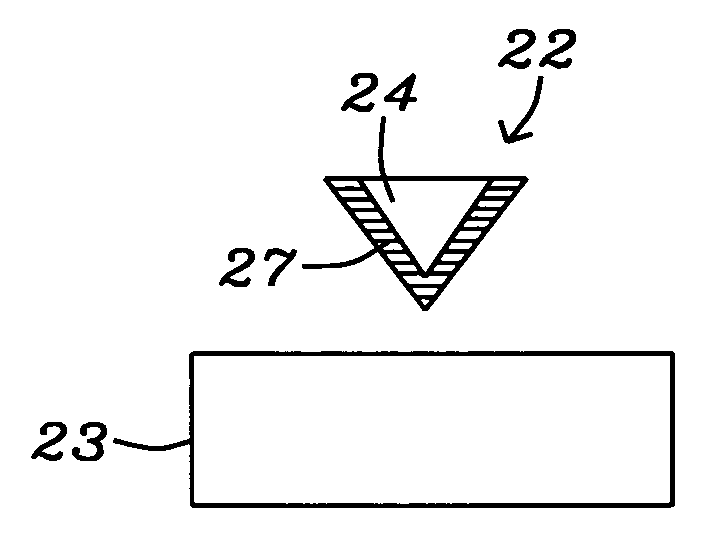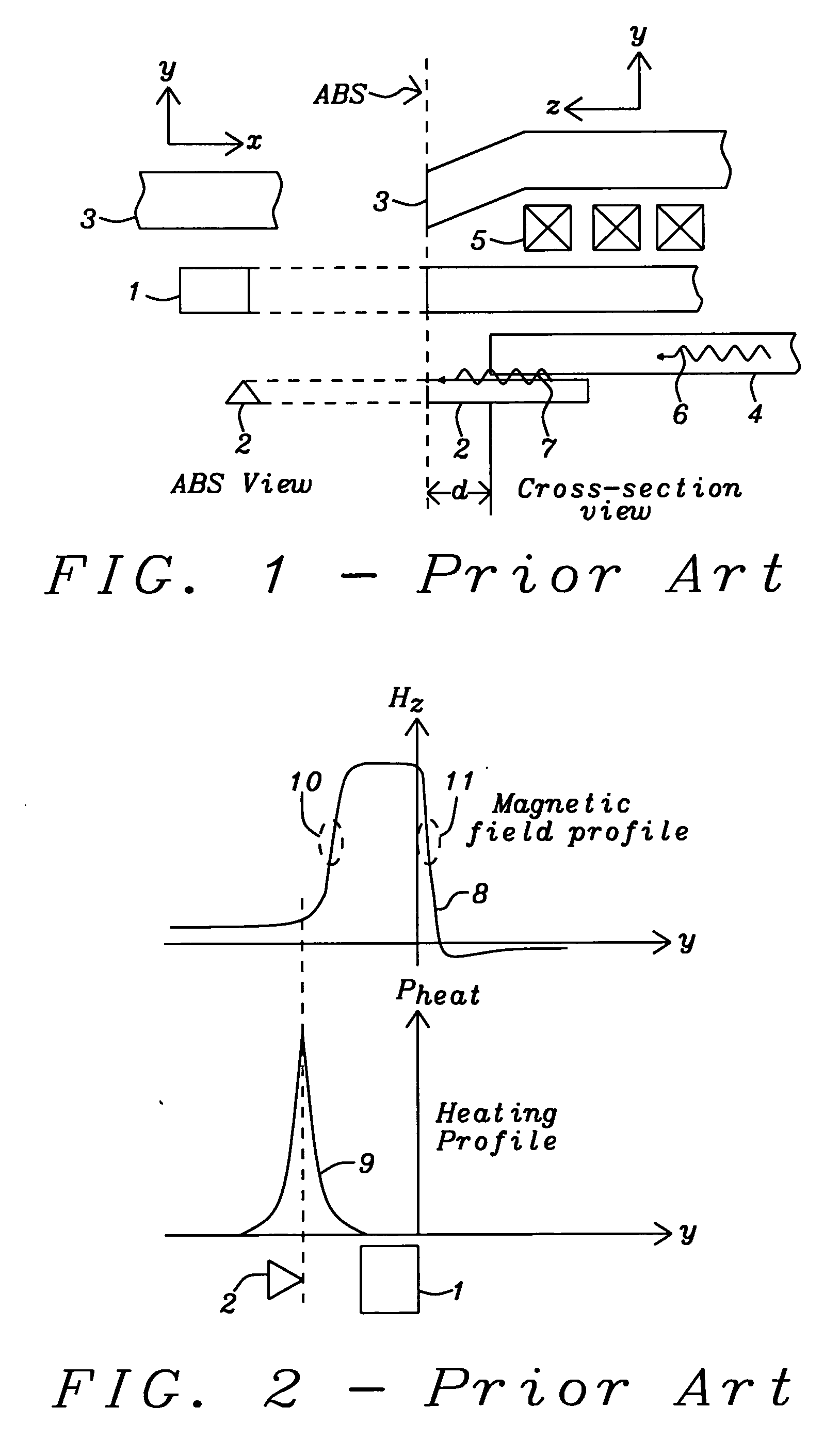Plasmon antenna with magnetic core for thermally assisted magnetic recording
- Summary
- Abstract
- Description
- Claims
- Application Information
AI Technical Summary
Benefits of technology
Problems solved by technology
Method used
Image
Examples
embodiment 1
[0058]Referring to schematic FIG. 8a, there is shown a side view of a first embodiment of a TAMR head that has a magnetic write pole (21), a plasmon antenna (22) and an optical waveguide (23). The magnetic pole generates a magnetic field to switch the magnetizations of medium grains during the recording process. The plasmon antenna (22) transmits electromagnetic energy from an edge plasmon mode to the medium. The plasmon mode is, in turn, generated, by optical radiation within the waveguide (23) that couples to the plasmon generating layer ((27) in FIG. 8b) of the plasmon antenna. The electromagnetic energy of the plasmon mode produces localized heating of the medium through absorption of electric field energy from the plasmon mode by the medium. The heating reduces medium anisotropy and coercivity to enable an easier switching by the magnetic field emanating from (21) and from (22).
[0059]More specifically, the waveguide (23) transmits an externally generated optical frequency elect...
embodiment 2
[0066]Referring to FIG. 9a, there is shown a schematic side view of a second embodiment of the plasmon antenna of the present invention which is similar to the first embodiment except that the plasmon antenna (22) is neither physically a part of nor is it directly attached to the writer magnetic pole (21). Instead, a non-magnetic separation layer (28) (shown as a space), metallic or non-metallic, separates the base of the antenna and the trailing edge surface of the write pole. Referring to schematic FIG. 9b, there is shown a horizontal cross-sectional view looking up at the ABS of the structure of FIG. 9a from the medium surface, showing the same elements. The distal surface of the waveguide (23) is shown as dashed, to indicate that it is recessed from the ABS, The plasmon antenna (22) is shown with its core (24) and plasmon generating layer (27) visible.
[0067]As is shown in FIG. 9c, the first step in fabricating the structure of FIG. 9a, is the deposition of a magnetic core layer ...
embodiment 3
[0068]Referring to schematic FIG. 10a, there is shown a side view of a third embodiment of the plasmon antenna (22) which functions in generally the same manner as the first two embodiments. In this embodiment, however, the waveguide (23) positioned partially between the write pole (21) and the antenna (22). The write pole (21) is, therefore, given an L shape to accommodate the placement of the waveguide (23). The ABS of the pole is shown with a slight extension.
[0069]Referring to FIG. 10b, there is shown a horizontal cross-sectional view of the same configuration from an upward facing perspective. The outline of the waveguide (23) is dashed, to indicate that it is not in the same plane as the other features. The entire L shaped base of the pole is not fully illustrated.
[0070]Because of the positioning of the waveguide relative to the antenna, the coupling of the optical mode to the plasmon mode will be through the exposed edges of the metallic layer (27), rather than at the vertex ...
PUM
| Property | Measurement | Unit |
|---|---|---|
| Length | aaaaa | aaaaa |
| Length | aaaaa | aaaaa |
| Length | aaaaa | aaaaa |
Abstract
Description
Claims
Application Information
 Login to View More
Login to View More - R&D
- Intellectual Property
- Life Sciences
- Materials
- Tech Scout
- Unparalleled Data Quality
- Higher Quality Content
- 60% Fewer Hallucinations
Browse by: Latest US Patents, China's latest patents, Technical Efficacy Thesaurus, Application Domain, Technology Topic, Popular Technical Reports.
© 2025 PatSnap. All rights reserved.Legal|Privacy policy|Modern Slavery Act Transparency Statement|Sitemap|About US| Contact US: help@patsnap.com



